

European
Nuclear Society
e-news
Issue 29: July 2010
We live in the age of social media; an age of virtually limitless opportunities and ways of communicating. The style and language used in social media is economical, informal and accessible to all. One of the main social media phenomena is Facebook. Since Mark Zuckerberg first created it in 2009 it has literally exploded onto the scene. Today, Facebook has over 400 million users worldwide, making it the second most visited website on the planet after that of the ubiquitous google empire. The Twitter phenomenon burst onto the scene even more recently and has quickly taken hold. And other social media platforms are undoubtedly being invented as we speak.
I was recently asked if I regularly update my Facebook profile. Well, I have to confess that I don’t even have a Facebook page, so that could prove a little difficult. I contribute rarely to blogs and have never experienced the parallel universe of Second Life. Indeed, my kids most probably think that I am a twit not to twitter and that I ought to get a life – any life, not necessarily Second Life! As a communicator I ought to make more of an effort, but I haven’t been bitten by the bug yet.
I have also been asked why many people think that the world of science, once referred to as the “apotheosis of the intellect,” has been slow to embrace the more prosaic world of Facebook and Twitter. The question hints at the oft-held view that scientists are somehow divorced from the mainstream reality of life, oblivious to emerging social phenomena; preoccupied with more fundamentally important things than new-fangled, transient ways of communicating. Well, such a view is, of course, simplistic in the extreme; a sweeping generalisation. Science is life and scientists can be as sensitive to the latest social trends, language forms and technological phenomena as anyone. A quick surf on the internet will reveal that there are countless blogs addressing scientific issues online and forums tackling controversial contemporary topics like GMOs, stem cell research, robotics and animal testing. Several scientific societies and research-based industrial companies have their own blogs, exploiting social media as a means of getting their messages across and keeping in touch with evolving trends. The Young Generation Nuclear network is a skillful exponent. Scientists of all ages use social media. Similarly, some don’t.
The truth is that whether social media are your cup of tea or not, the new contemporary language they speak needs to be mastered, whether we like it or not. Social media are here to stay. To dismiss or ignore them could be costly. Our adversaries use them to good effect to reach an ever-wider audience. They can offer us too a whole new world of opportunity to show to the millions of people who use Facebook, Twitter and the other social media out there how nuclear science is about the bottom-line, gritty reality of everyday life; every bit as contemporary and relevant as social media. Surely, we must use every channel at our disposal to highlight the numerous applications of nuclear technology, to gain greater visibility for our work and to improve public acceptance of nuclear energy? In a world where communicating has become a religion, we cannot afford not to embrace social media – however populist and trendy they might appear at first to some of us? Why don’t you share with ENS NEWS your views and experience of using social media. Meanwhile, I promise to learn to tweet and blog more efficiently.
Well, before you set off on your hard-earned summer holidays, ready to blog and tweet to your heart’s content, I hope you will take time to read, and enjoy, ENS NEWS N° 29.
ENS NEWS N° 29 kicks off with a Word from the President that focuses on the contribution that NucNet has made to the nuclear community in the twenty years since it was founded. Andrew Teller then explores the murky world of Frankenstein alternatives and how the anti-nuclear lobby exploits every opportunity – gothic or otherwise – to spread false information about nuclear energy.
In the ENS Events section there is a detailed report and personal analysis of the recent ENC2010 conference from Bernard Bonin from the ENS High Scientific Council.
In this bumper summer edition the contributions to the Member Societies and Corporate Members’ section are simply too numerous to mention individually. They include a report on the 2010 WONUC nuclear marathon, an analysis of smart grid islanding, news from Finland on the EPR and ONKALO construction sites, a variety of news updates and educational and artistic initiatives from several member societies and Women in Nuclear.
As usual, the YGN has been very active. Two roving reporters give us their YGN take on the ENC2010 conference in Barcelona, where the European YGN also held its Core Committee Meeting. There is also a report from the North American chapter on a nuclear workshop held recently in San Francisco.
Finally, the World News section features an overview of the nuclear scene in Taiwan, a selection of articles from NucNet and the usual information update on upcoming ENS conferences.
Enjoy ENS NEWS N° 29!
On behalf of the whole ENS NEWS team I would like to wish all readers a relaxing, well-earned and invigorating summer break
|
|
http://www.euronuclear.org/e-news/e-news-29/presidents-contribution.htm


 |
On 24 June, NucNet, the global nuclear news service, organised a seminar on the occasion of its twentieth anniversary. The event ran back to back with its General Assembly. The service that NucNet provides for the wider nuclear community and the public at large is vitally important in today’s fast-evolving nuclear scenario. Increasing public |
|---|
acceptance of nuclear energy is a priority and NucNet plays a vital front-line role in supporting that objective. But it wasn’t always as clear and simple as that.
After the accident at Three Mile Island in 1979, and the Chernobyl disaster in 1986, the nuclear energy industry adopted a somewhat passive and defensive attitude towards the media. Against a backdrop of enormous anti-nuclear feeling among politicians and the general public the industry was afraid of reporting even a small incident for fear it would engender further enormous criticism in the media. It thought it would be better not to say anything at all, as this was deemed a safer, no risk strategy. The nuclear industry in those days was almost a closed community. And a news vacuum did it no favours.
From this came the idea – first discussed 20 years ago in Switzerland and backed from the very beginning by the European Nuclear Society – to have a network of reliable correspondents around the world that could make sure that news and information about the nuclear industry was accurate and provided quickly and in a language that everybody could understand. That was how the nuclear communications network NucNet was born and since then NucNet has since established itself as a reliable and essential source of information on the global nuclear industry and the energy policy scene. At NucNet’s 20th anniversary seminar the main message articulated was that communications in the nuclear industry has never been more important than it is today.
Times have changed, of course. NucNet is renewing itself and evolving. People say that there is already more than enough news available via the Internet. But the Internet is sometimes far from reliable and the point of NucNet is that it only publishes news and information that has been verified at the source. NucNet is needed now more than ever because it understands the industry and understands that information is crucial for public confidence.
NucNet covers news 24 hours a day, seven days a week, but focuses particularly on safety and security information that completes and complements information exchange systems established by the industry itself and by the authorities. I am talking here about WANO, INES, the Vienna Convention and so on.
In short, NucNet has developed into a global, independent, non-profit association, with network members in every country having a nuclear energy programme. But the general aim remains the same. NucNet will always be about accurate information and a network of professionals who help generate, share and use that information. We in the nuclear community are all part of that network and we can all play a part in seeing it continue to thrive. Whatever level of work we do within industry or research, it is vital that all of us contribute to the flow of accurate information about our industry.
I would like to congratulate NucNet for twenty years of excellent service to the nuclear community and wish them all the very best for the next twenty years!
Vladimir Slugen
President of ENS
http://www.euronuclear.org/e-news/e-news-29/listening.htm


Always adept at coining expressions that strike the imagination of the public, the opponents of genetically modified organisms (GMO) have described their use in agriculture as giving rise to “Frankenstein food”. You might be surprised to hear that their cousins, the anti-nuclear, are not immune to this kind of tinkering: they fabricate Frankenstein alternatives to nuclear energy. What I mean is that they pick and choose bits of information and assemble them to make their case against nuclear energy without worrying about the consistency of their constructs. Examples of this strategy abound in the anti-nuclear literature. Let me elaborate my point with a recent example.
“The Nuclear Bailout” is the title of a report published in June 2010 by an organization named Environment America (EA). Its publication aims to argue against the grant of a government loan to Georgia Power, an American utility that intends to build a new reactor on the Vogtle site. Its line of attack consists, as usual, in listing all the shortcomings of nuclear energy and in claiming that improved energy efficiency and other carbon-free energy sources will make it unnecessary to add any nuclear generating capacity in the USA. Forty-five pages long, supported by 205 notes and almost as many references, it has all the trappings of a serious research paper. But does it really belong to this category?
There are many ways of showing that it does not. One of them consists in exploiting the Frankenstein metaphor. To illustrate how life is breathed into Frankenstein arguments, I shall focus on the treatment reserved in the report to the interruptible nature of wind and solar energy. EA’s point is made in two stages. EA starts by pointing out (page 24) that
“Nuclear reactors produce electricity in huge blocks of power and are incapable of reacting nimbly to changes in electricity demand.”
While the first half of this sentence is correct, the second one is plain wrong: the French reactor fleet has amply demonstrated that it is perfectly capable of adjusting to demand. The argument is pursued as follows:
“[…] when power is supplied in large blocks by large central power plants, the failure of any individual power plant or power line carries a great risk of widespread electricity supply disruption.”
This again is not supported by the facts, in Europe at least. The European grid counts around 140 nuclear units and is highly reliable. Grid breakdowns are generally due to insufficient capacity of the high voltage transmission lines, a fact that is actually acknowledged by the authors of the report on the following page and confirmed by the European case which features a robust, highly interconnected transmission network. Let us say nothing more on this for the moment and turn to the second stage of EA’s argument: the alternatives to nuclear power plants. In the array of solutions permitting to dispense with the construction of new nuclear units, the authors of the report give wind energy a prominent place. I am not questioning the usefulness of wind energy, but the way the case is made on page 28 of the report is not acceptable. Quoting an estimation made by the US Department of Energy, EA indicates that wind energy could provide 1500 TWh at a cost ranging from 6 to 10 cents per kWh?, this estimate including
“estimated transmission costs, assuming that the existing grid has 10 percent spare capacity that could be used for wind, and that appropriate planning will allow new lines to be constructed as needed.”
But spare capacity and new lines are precisely what is needed to avoid the grid failures ascribed to large-size power plants. So the authors of the EA report are not comparing like with like: nuclear power plants are denied what is granted to wind farms. The rules of the game are changed to suit their purpose. Their reasoning applies to an artificial world, in which elements are taken into account or dismissed without regard to consistency1. It is nevertheless crucial to their analysis since it is needed to put wind and nuclear energy on a par as regards continuity of supply. If wind and nuclear were really equally interruptible, the case for nuclear would be reduced to next to zero.
It should strike anybody that picking and choosing one’s facts on the sole criterion that they suit a given purpose is not a sound investigative procedure. The proof of this statement is found in the fact that it would be equally possible to adopt the same procedure to “demonstrate” the opposite conclusion. A procedure that can demonstrate anything demonstrates nothing.
All this betrays ordinary faulty thinking and would not be worth mentioning if it did not highlight an important and dangerous tendency of the human mind. The authors of the EA report are perfectly capable of thinking critically: a quick look at the table of contents of their report shows that they devote three times as much space to criticizing the nuclear option as to describing replacement solutions. Part of their criticism is understandable (e.g. nuclear energy is rather expensive, it has not yet been proven that future projects will be risk-free). However, many mistakes are also made. The funny thing about them is that they all contribute to reinforcing the conclusion reached. If they were due to simple ignorance, they would be subject to chance and more or less equally spread between arguments for and against nuclear energy. The only way of explaining the overwhelming majority of mistakes going the same way is to posit that the critical power of the authors is exercised selectively: arguments going against their position are dissected without mercy; arguments supporting their conclusion are accepted without further examination. There is nothing surprising in such behaviour. This is the spontaneous reaction of anybody. The important thing is to be aware of this trend and to react accordingly. This can be done by subjecting one’s reasoning to permanent scrutiny: are there elements that would give the lie to my statements, what if my opponents used symmetrical arguments? (Such an attitude is called self-regulation; see my column titled “Critical Thinking” in the spring 2006 issue of ENS News.) Failing to do so2 indicates that one is interested only in the conclusion and not in the way it is reached, i.e. that the conclusion is actually the starting point that generated the demonstration instead of the demonstration leading to the conclusion. Those who feel an urge to engage in such faulty thinking will be too biased to notice that they have reversed the causal link between demonstration and conclusion. As a result, Frankenstein arguments appear doubly dangerous. First, they are of course capable of swaying the unaware on spurious grounds. Second, and more surprisingly, they lead those who devise them to convince themselves that their conclusion is based on their reasoning while it is exactly the opposite that has taken place. We’d better be aware of this danger in order to better fight it, otherwise we’ll stand no chance whatsoever of saving the planet.
1 To make a comprehensive analysis of the argument, I must address one possible objection: the cost of transmission lines is already included in the case of wind energy whereas it would come in addition in the case of nuclear energy. If this was true, wind energy would come out noticeably cheaper than nuclear energy. But this is not the case: the range quoted agrees with marginal values coming from other sources. The kWh cost quoted does not therefore include the cost of replacement energy, and replacement will be needed aplenty. The authors of the report commit the sin of mixing up generating capacity (MW) and generated energy (MWh). However one looks at it, the arguments does not take all relevant factors into account.
2 One might ask how I know that I am not prone to exactly the same mistakes as the people I criticise. The answer is quite simple: I can’t be sure. The only thing I am sure of is that trying to avoid such traps will give better results than not trying at all.
http://www.euronuclear.org/e-news/e-news-29/enc2010.htm


With about 730 registered participants and experts from more than 45 countries, the European Nuclear Conference ENC 2010 exceeded all expectations in terms of attendance. We noted with pleasure the participation of senior managers from industry, such as those representing General Electric, Westinghouse, Hitachi, AREVA, EDF, ROSATOM, TVO, IBERDROLA, SCANA, ENEL, etc…The conference also attracted many young professionals, either from the research community or from industry. The European Nuclear Education network ENEN made the most of the opportunity provided by ENC 2010 to organise its ENEN PhD event, with a special session devoted to presenting the PhD work of 8 graduate students from various European countries. Special mention should go here to Matteo Bucci from Pisa University, for his work on steam condensation in the presence of air and helium, and to Aurelia Chenu, from the Paul Scherrer Institute, for her work on neutronic-thermohydraulic coupling in sodium fast reactors.
The 450 papers submitted featured a very wide and heterogeneous range of subjects that covered research and industry-related topics. Selected papers will be published in a special issue of the Revue Générale Nucléaire, which will be edited by the French Nuclear Society.
During the first day’s opening sessions top managers from the nuclear industry set a rather optimistic tone for the conference, emphasising that: new build projects are foreseen or under way in many countries; the safety record, availability factor and general behaviour of the existing fleet of light water reactors is good, providing an incentive for utilities to require and obtain from the safety authorities the authorisation to extend the operation time of their power plants.
According to many economic studies, notably a very detailed one from OECD, nuclear energy is economically competitive, even if no carbon penalty is applied to its competitors, coal or gas. However, the competitive advantage of nuclear energy is on the decrease, due to the re evaluation of the investment cost of Generation III new builds, and a (temporary?) lowering of gas prices.
Also remarked upon was the healthy competition that exists between some major nuclear reactor vendors, for the many new build projects in the pipeline. Could the ongoing economic crisis, added to the handicap of a capital intensive industry associated with long pay-back time constants, prove an obstacle to nuclear deployment? The constructors are definitely optimistic: “Crisis? What crisis?” they say. Could insufficient manpower be an obstacle to nuclear development? Here, the answer is less optimistic because of the real shortage of well-trained engineers and technicians. However, this gap will probably be filled soon thanks to the joint efforts of the academic community and of industry (see session on Education and Training).
Another cause for optimism is the recent disarmament treaty signed in the world. This was reflected in a talk entitled Nuclear non proliferation is not utopian, given by Pierre Goldschmidt, from the IAEA.
The positive tone of the conference also mirrored the favourable evolution of public opinion on nuclear energy that is apparent in many countries. Perhaps this has been further helped by the oil catastrophe in the Gulf of Mexico? All these factors led some authors to say that it is time now to reconsider the eligibility of nuclear energy as a « Clean Development Mechanism », an important condition liable to boost its deployment in emerging countries
(see M. Lecomte’s talk).
The lifetime extension of the light water reactors is a general trend, even in « phase out countries ». However, material ageing (corrosion, irradiation embrittlement and swelling) must be kept under control if this long-term operation is to be authorised. Is the science of material ageing a completely mastered one? Huge progress in multi-scale material modelling has been made, but the beneficial consequences of this progress in terms of understanding are yet to be ascertained.
As shown in the talks given by several reactor builders, the benefits of modular construction in terms of cost and delay are already apparent in Generation III new builds. We noted the growing importance of the European Utility Requirements for promoting standardised designs, and for harmonising best practices in safety. Another important highlight of the conference was the growing international interest in small modular reactors, built and assembled in series and transported on site. T. Sanders explained why these reactors could be interesting for niche applications in countries requesting local power sources for cogeneration of electricity and heat. These reactors require large amounts of R&D. Where is Europe with this research?
The nuclear industry has displayed a very good safety record in the past, but the importance of harmonising national safety approaches has been stressed repeatedly (M. Lecomte) as a prerequisite for the global development of nuclear energy. The initiatives aimed at harmonisation are numerous. Some have been described in detail, e.g. WENRA’s work or that of the European Nuclear Safety Regulators’ Group ENSREG (see A. Stritar’s talk). Structures for developing common databases and independent analyses for incidents have also mushroomed, e.g. a clearing house, IAEA standards, codes and norms, OECD initiatives, WANO benchmarks.
With the anticipated rise of the price of natural uranium, fuel treatment and recycling is likely to become more and more attractive. It is still an option with the present LWR fleet, but it will soon become compulsory, because nuclear energy is not sustainable without fast reactors, which absolutely require it. Many separation options have already been demonstrated in a laboratory:
Grouped separation (COEX, a significant step towards non proliferation; GANEX for minor actinides)
Enhanced separation (DIAMEX, SANEX for minor actinides, ExAm for Americium)
Studies are also being carried out into recycling options in fast reactors (Should one recycle minor actinides and how?).
There has also been a noticeable renewed interest in the thorium fuel cycle.
Interesting developments in dismantling technology were presented during the conference. Soon these could potentially save significant amounts of money incurred during dismantling, notably with communications on organic waste incineration, decontamination by wet oxidation, the pickling of metals and laser treatment.
Waste conditioning is also an area where progress is being made, e.g. there have been advances in vitrification technology (cold crucible, plasma vitrification), which were reported on during the conference.
Waste management activities worldwide show a contrasting picture. Whereas the prospect of starting up the Yucca Mountain facility in the US is fading fast, the success of the democratic process in Finland and Sweden has paved the way for future geological disposal in Europe. The idea of international repositories grouping the waste from several countries is being more and more openly discussed. This option, which would make sense from a technical point of view, poses difficult political and ethical problems, which were outlined by H. Forsström.
ENC2010 was also provided an occasion to reassess quality communications towards the public, which are a prerequisite for gaining public acceptance and for the democratic decision-making process. The communications strategy adopted in the Netherlands by COVRA has been recognised as a source of inspiration for other countries (see Hans Codee’s talk).
Research reactors are presently experiencing a “medical isotope crisis”. The coincidence of technical problems affecting several isotope-producing reactors showed the fragility of the world’s medical isotope production structure. André Versteegh gave a detailed analysis of this isotope crisis and made a few proposals for solving it.
The fleet of research reactors is ageing worldwide, as the building of new facilities does not compensate for the closure of the older ones. The conference provided an opportunity to confirm that in the field of research reactors, national projects are history. International cooperation is what is needed now - to have a small but coherent fleet of modern research reactors, with at least one or two operating in Europe. That cooperation should focus on:
neutron sources for fundamental research
MTRs for materials testing and fuel qualification (e.g. JHR)
Reactors dedicated to safety studies
Reactors dedicated to education and training
Zero power reactors for validation of neutronics modelling and simulation
Reactors for isotope production (e.g. PALLAS)
Prototypes of new generation reactors (e.g. MYRRHA, ASTRID, ALLEGRO) for a maturing of Generation IV concepts
A fusion research reactor (ITER)
The author of this report noted with pleasure a very important quote from a CEO of a big nuclear company, who said: « A significant portion of the incremental cash flow of nuclear utilities should support financing new generation reactors ». Hopefully this advice can be transformed into reality! The nuclear renaissance, already observed in industry, has not yet reached the research laboratories. With generally small amounts of funding made available by states, the research that will determine the future of nuclear energy is becoming more and more left in the hands of the industry.
Most of the conference was devoted to fission, but the fusion community was represented with significant presentations, notably the one by C. Alejaldre, who explained not only the hopes associated with ITER but also the immense difficulties of making this big organisation work effectively.
A major bottleneck in the development of fusion energy is linked to materials, which must be able to withstand high temperatures, an aggressive plasma environment and high neutron flux. This problem is largely shared by the fission community. The conference enabled the considerable progress that has been accomplished recently in the multi-scale modelling of materials (see S. Dudarev’s and N. Castin’s talks) to be highlighted. We also noted the uncertainties associated with the building of the IFMIF neutron irradiation facility.
The conference also assessed the continuous progress that has been made in the following areas:
Diagnostic tools, imaging and radiotracers, thanks to the development of hybrid techniques, for example positron emission tomography coupled to nuclear magnetic resonance;
Therapy based on very localized and evenly targeted irradiation
Both diagnostic tools and therapy benefit from the use of short-lived isotopes linked to smart biomolecules.
Progress in the epidemiology of low doses was also reported on by M. Wakeford during the conference. Recent results do not contradict the hypothesis of a « linear, no threshold, dose-effect relationship». On the other hand, uncertainties remain as to the influence of dose rates.
The nuclear renaissance has given rise to a very great need for more well-trained technicians and engineers. Two years ago the educational offer proposed by western countries was insufficient to fulfil these needs. Since then a huge effort has been made by the academic community, with the help of industry, to increase and enhance the offer of education and training in the nuclear domain (European Nuclear Education Network - ENEN, the creation of several « Masters in Nuclear Engineering » in Europe, the European Nuclear Energy Leadership Academy - ENELA, etc.). The consequence of this dynamic development is healthy competition between universities to attract foreign students. The provision of education and training is still increasing – albeit in a somewhat disorderly way - but the impetus is there! Another highlight of the conference was the presentation of many simulation tools and their growing use in education and training. But to what extent can these tools replace training on a real reactor?
Research activity in the nuclear domain is more and more organised through international networks. Several active networks were referred to during the conference, among others the GIF and INPRO networks for the development of Generation IV nuclear systems. European programmes like ENEF, SNE-TP (see Pazdera’s talk) and ACSEPT-ACTINET (see S. Bourg’s talk) have also been reviewed, reflecting the image of a lively research programme.
These networks can rationalise the allocation of tasks between network members and bring some coherence to research activities worldwide. However, their administration is top-heavy, and their scientific productivity remains to be proven.
Altogether, this conference provided a stimulating occasion to review the progress that has been made in the very active nuclear arena!
Bernard Bonin
Chairman of the ENS High Scientific Council
http://www.euronuclear.org/e-news/e-news-29/smart-grids.htm

*Frigyes Reisch KTH, Royal Institute of Technology, Nuclear Power Safety Stockholm, Sweden
* European Union, Steering Committee for Smart Grids and Smart Meters, member as the Consumers’ representative.
ec.europa.eu/energy/gas_electricity/smartgrids/taskforce_en.htm
In a three-phase system, when a short circuit between two lines or a single or two lines to earth occurs, three types of currents are immediately produced: positive, negative and zero sequence. Using these signals, less priority consumers can be disconnected from the grid and the power of the nuclear reactor, which supplies all consumers, can be diverted to supply priority consumers, although with only a couple of cycle times due to dwindling amplitude. This is an example of an island operation with a nuclear power reactor and prioritised consumers connected via a smart grid.
In a three-phase system when a short circuit between two lines or a single or two lines to earth occurs, it is some times intermittent, not recurrent. Therefore, the lines are not immediately disconnected on the signal of high current and/or low impedance. With this type of short circuit, according to the symmetrical components theory, three types of currents are produced immediately: positive sequence, negative sequence and zero sequence.
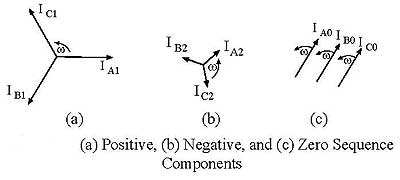
Figure 1, Symmetrical components
A description of the theory is given in standard university text books for electrical engineers. In Figure 2, there is an illustration of these relationships and their possible usages. Of course, should it need to be implemented today, probably computer algorithms would be used instead of mechanical devices.
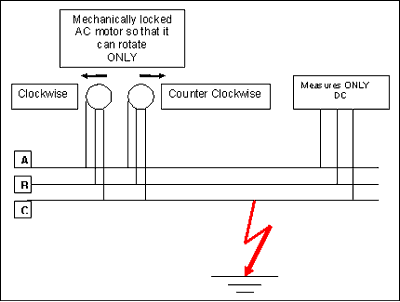
Figure 2, Illustration of the occurence and measurement of symmetrical components
Suppose a generator supplies four consumers, 1 – 4. Consumer 1 is the prioritised one. The others are peripheral. A short circuit must not jeopardise the power supply to the priority consumer. So, as soon as a short circuit is indicated at any of the peripheral consumers’ line, all the latter will be immediately disconnected. The fault signals which come first are emanated as symmetrical components. If there is an abnormality in the three-phase system i.e. a negative sequence current and/or a direct current signal can be sensed at one or more peripheral consumer, all low-priority breakers will be opened and a signal will be sent to the nuclear power reactor to reduce the supply to the generator so that its output power corresponds with that of the prioritised consumer. See Figure 3
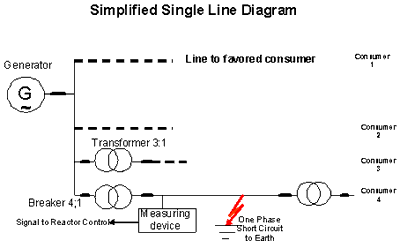
Figure 3, Simplified schematic block diagram; generator, breakers, transformers, measuring devices, transmission lines, short circuit and consumers
Suppose that the generator is supplied by a nuclear power reactor. As soon as there is a negative sequence or DC signal from any of the low priority consumers all low priority consumers are disconnected and a signal is forwarded to the reactor control system to insert the control rods to decrease the nuclear power to the level corresponding to the consumption of the high-priority consumer. Neutron kinetics influence the reactor’s transient behavior. Reactivity inputs steer the kinetics. Besides the control rods there are additional reactivity inputs: from the fuel and the moderator and in a Boiling Water Reactor also from the coolant void. Neutron flux (nuclear power) is converted into thermal power in the reactor and rotational power in the turbine and, finally, into electricity in the generator. See Figure 4
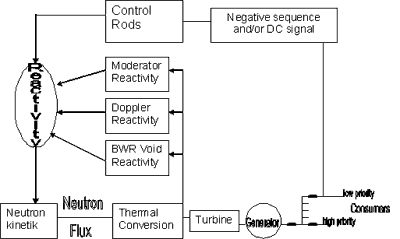
Figure 4, Signal flow and power conversion
Neutron kinetics govern the reactor’s transient behavior. The reactor kinetics equations with six delayed neutron groups, the fuel and moderator thermal dynamics equations, in the form of Laplace transform with simple time delays and then as first degree differential equations.
Altogether nine coupled differential equations are solved numerically in Reference [1].
In reference [2] there is an example to be use as a model based simulation by applying Matlab’s sister program, Simulink
For this study, instead of differential equations a Simulink model is created and applied for a Pressurised Water Reactor (PWR). The control rod movement is set to a minus 10 pcm step change, to reduce the power to ~70%, that of the consumption of the priority consumer.
The block scheme is illustrated in the Figure 5
The initial value of both the nuclear and thermal power is 1. Due to the time delay of the thermal process and the inertia of the turbine generator, the thermal and electrical power changes lag behind the nuclear power. The drop in thermal power is much less then that of the nuclear power. The scope connected to the nuclear and thermal power signals gives the picture shown here as Figure 6
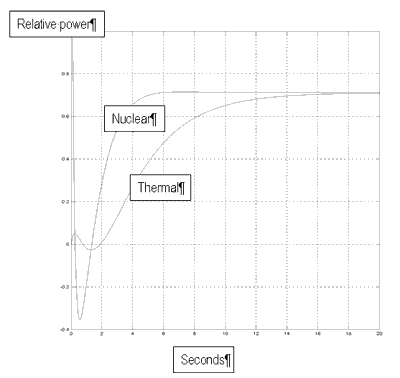
The generator output recovers quickly after a few dwindling cycles. The generator output signal is shown here in Figure 7

A general study of the safety and reliability for smart-, micro- and islanded grids is given in Reference [3]
This study shows that a nuclear power reactor can be used for islanding to support top priority consumers. Most reactors are tested to ensure that they can be disconnected from the grid and minimise their power for house turbine operation. In practice, however, when a failure occurs in the transmission line from the nuclear power plant the excess current protection system tries a few times to restore the line and the reactor control system cannot cope with the surges and drops in power demand. So the whole process ends with a scramble. Priority consumers loose their power and the reactor must be restarted. A restart is often a time-consuming process. Here an alternative solution has been studied.
[1] Calculation of the neutron flux, fuel and moderator temperature transients for Research Reactors, ENSnews April 2008
F. Reisch, Nuclear Power Safety, KTH, Royal Institute of Technology
www.euronuclear.org/e-news/e-news-20/neutron-flux.htm
[2] Taming the Chernobyl Avalanche, ENS NEWS April 2008, Frigyes Reisch,
Nuclear Power Safety, KTH, Royal Institute of Technology
S-10691Stockholm – Sweden
www.euronuclear.org/e-news/e-news-20/chernobyl-avalanche.htm
[3} SAFETY AND RELIABILITY FOR SMART-, MICRO- AND ISLANDED GRIDS
Werner FRIEDL, Lothar FICKERT, Ernst SCHMAUTZER, Clemens OBKIRCHER
Institute of Electrical Power Systems, Graz University of Technology – Austria
(C I R E D 20th International Conference on Electricity Distribution, Prague, 8-11 June 2009)
www.ove.at/akademie/CIRED2009_1061_paper.pdf
http://www.euronuclear.org/e-news/e-news-29/SNE-news.htm

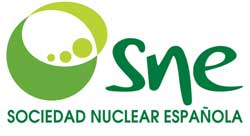
The Spanish Nuclear Society will organise its 36th Annual Meeting in Santiago de Compostela, the capital of the province of Galicia, from 6 – 8 October. The meeting will provide professionals and companies representing the nuclear industry with a focal point for analysing - in this beautiful city - the current situation and future prospects for nuclear energy. All the relevant information about the meeting is available at: www.reunionanualsne.es. By following the very simple menu divided in four sections, according to the different roles - Congresistas (Member of the Congress), Ponentes (Presenters), Expositores (Expositors) and Acompañantes (Companion) - you can easily access the most relevant information you need relating to the meeting. Each different section contains the most interesting data for each category of attendee, including instructions for registration and access to the specific services, from the agenda to the personal inscription section.
The SNE Annual Technical Session was organised at Tecnatom, on June 9, with a large attendance of professionals and SNE members. The session was devoted to the management of safety-related equipment and components.
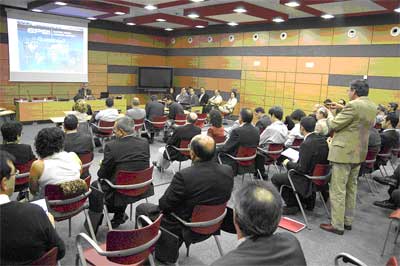
Barcelona played host to the European Nuclear Conference (ENC 2010) from 29 May to 2 June. It was organised in collaboration with the Spanish Nuclear Society (SNE) and FORATOM. At the meeting you could find the main companies and representatives of the global nuclear industry present, although it was the first time that this conference had taken place in Spain. This meeting was a focal point for the main experts in the field. The programme helped people to share experiences with one another thanks to the 500 presentations, meetings and working sessions devoted to such subjects as advanced reactors, nuclear global development, nuclear safety and waste management, that featured on the agenda.
In parallel, a commercial exhibition took place in which the main companies and organisations active in the nuclear industry presented their work. The exhibition gave them the opportunity to exhibit this work to an international market.
The Spanish companies Empresarios Agrupados, Endesa, Ensa, Enusa, Gas Natural Fenosa, Grupo Dominguis, Iberdrola, Tecnatom and Técnicas Reunidas participated together in the Spanish pavilion, coordinated by the Spanish Nuclear Industry Forum. It was one of the most popular ones, intensively visited by the 1000 people who were in Barcelona’s Congress Palace of Catalonia, where the ENC2010 conference was held.
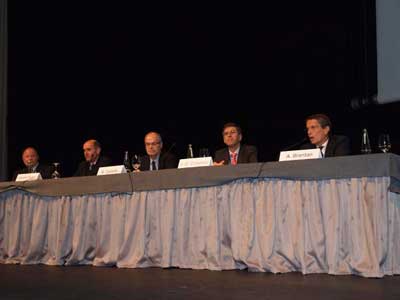
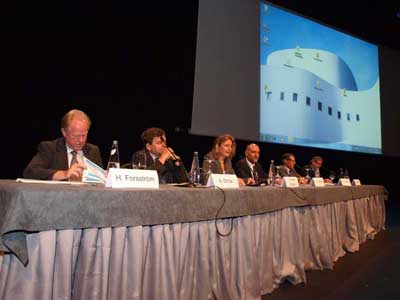
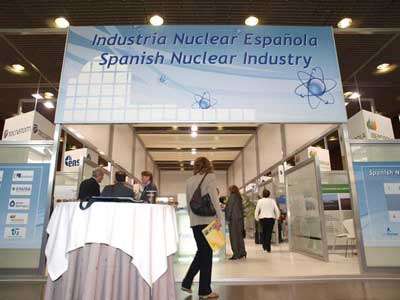
http://www.euronuclear.org/e-news/e-news-29/women-in-nuc-energy.htm

Members of the Slovak Nuclear Society’s sections – Women in Nuclear (WIN) and Radiation Protection (RP) - work closely together because they share many common interests. They are mostly women and, therefore, stand out in what is predominantly a male profession. Today, there are female reactor operators and women active in areas such as radiotherapy and radio-diagnosis, nuclear and radiation education etc. There are also women working for nuclear regulatory authorities, environmental protection agencies, and in other institutions dealing with nuclear power and the applications of ionising radiation.
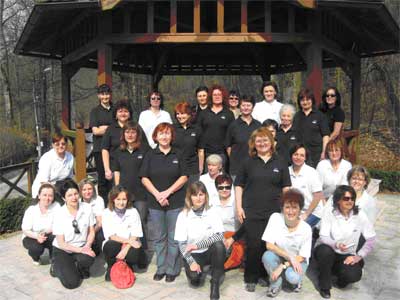
Members of WIN and PR sections at 2010 excursion
The activities of the WIN and RP sections focus on a number of areas: the development of expert platforms, the dissemination of information on the uses of ionizing radiation, radiation protection and work with young people.
Relations between members are friendly and open thanks to their participation in common activities: In May 2009, WIN and PR sections organised a trip to the Hungarian town of Veszprém, where they visited laboratories at the Institute of radiochemistry and radioecology of Panon University. Information provided during the visit of the laboratories was very interesting and launched a useful debate among experts. After the scientific part of the excursion, participants spent a nice relaxing time at Bük-fürdo Spa.
Good recommendations and the shared interests of the sections’ members also resulted in a similar excursion in March 2010. This time, participants visited the weather forecasting and weather warning center at the Slovak hydro-meteorological institute. Here visitors gained an insight into all phases of the institute’s work, from the collection of meteorological data from its network of meteorological stations, radars and satellites, to the numerical models used for the development of weather forecasting and advanced weather warnings. They also learned about the position of the radiation monitoring system at Slovak hydro-meteorological institute, as well as its role in the international exchange of radiation data. A follow-up meeting focused on an assessment of WIN and RP activities and on the future of activities. Once again, the technical part of the excursion was complemented by a relaxing stay at the Spa Trencianske Teplice and by a visit of the castle in the Slovak town of Trencin.

Visit of Slovak hydro-meteorological institute
Activities of this type are regularly offered by SNUS. They are important for maintaining close relations among its members and result in successful technical cooperation among experts from various fields associated with the peaceful application of nuclear energy and radiation.
Tereza Melicherova,
WIN and RP sections of the Slovak Nuclear Society
http://www.euronuclear.org/e-news/e-news-29/sck-cen.htm

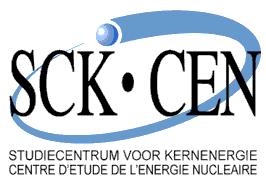
In 2009, Belgium decided to actively participate in the international fusion programme "Broader Approach", with the Belgian Nuclear Research Centre, SCK•CEN, playing a leading role for Belgium. As a result, on 9 June, 2010 SCK•CEN signed a major contract with ALM Sclessin (Ateliers de la Meuse SA, in Sclessin, near Liège). ALM will construct a cryostat, a large stainless steel tank capable of keeping extremely low inside temperatures (-269 °C) while maintaining an ambient outside temperature. This reservoir will be used to perform cold tests of powerful superconducting magnets for a fusion reactor located in Japan (JT-60 SA). These cold tests will be conducted in France. ALM will also supply specialised accessories, including a system of vacuum pumps and a cryogenic valve box.
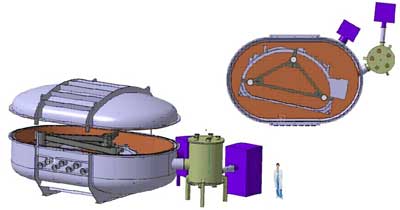
The scientific challenges in fusion technology are huge: the temperature in a fusion process is close to absolute zero in the magnetic coils surrounding the vacuum vessel to hundred million degrees in the heart of the plasma. The development of structural materials to withstand the extreme conditions present in the vessel is one of the great technological challenges that we face today.
The ITER project in Cadarache (southern France) is a collaborative venture between seven partners (including the European Union). Following the decision to build ITER in Europe it was decided to set up a "Broader Approach" R&D programme on fusion in common with Japan. It aims to develop technologies and research for the production of fusion power that cannot be performed in ITER. This programme is based on a voluntary contribution of various European Member States.
In the spring of 2009, Belgium officially committed itself to participate in the three main projects of the “Broader Approach” (the IFMIF project, the upgrade of the JT-60 SA Tokamak and the IFERC/DEMO project). Belgium's three national regions are involved in the project, providing a total budget of 11 million Euros over a six to seven year period. SCK•CEN is the project coordinator for Belgium. Also other research centres, universities and companies are participating in this international R&D programme based on technological excellence.
SCK•CEN participates directly in two projects. The first is the design and validation of the irradiation facility IFMIF (the International Fusion Material Irradiation Facility). This plant, which will produce high-energy, high-intensity neutrons, is required to test materials in similar conditions as the ones that will occur in future fusion reactors. IFMIF should be ready by 2025, when ITER should also be operational. IFMIF will give essential information for the construction of power generating fusion reactors beyond ITER. SCK•CEN is responsible for the irradiation testing of sensitive components of the IFMIF, for the design of a test module for the start-up of IFMIF and for the design of the so-called low-flux test module. In 2009 SCK•CEN experts designed the vessel for irradiation testing, the basic design of the start-up test module and prepared the low-flux test module. As a result of these activities Belgium is actively participating in the design of IFMIF.
In addition, SCK•CEN has also participated in a research project called DEMO, which is looking into the materials that will be used in a future fusion power plant. The launch of this plant is not expected before 2050.
SCK•CEN has been developing expertise in this field for over twenty years. Its current research focus mainly on four areas:
the effects of radiation on materials, components and robotics equipment
the development of appropriate instrumentation and irradiation devices
plasma wall interaction studies
the social and economic aspects of fusion in the energy mix
For more information, contact Vincent Massaut at: vincent.massaut@sckcen.be
http://www.euronuclear.org/e-news/e-news-29/info-campain.htm

One of the main objectives of the Romanian nuclear industry’s public relations policy is to inform end educate the younger generation about particular espects of the use of nuclear energy, in order to increase the level of acceptance and to atract more specialists to the nuclear field. With this in mind, AREN (the Romanian Nuclear Energy Association) and ROMATOM (the Romanian Atomic Forum) started, in 2010-2011, an information campaign aimed at teachers and students on topics such as: the benefits of nuclear power, radiation, radioactive waste etc. The information campaign sought to explain in an easy-to-undertsand yet technically accurate way, the production of nuclear energy, its positive effect on environmental protection, the applications of nuclear power in daily life and the elimination of popular myths thanks to correct facts and information provided by scientists.
The first phase of the campaign consisted of organising a series of seminars under the heading Nuclear energy, the power of the future: between perception and reality. Students of physics, biology and chemistry and practical science teachers from Bucharest’s schools and high schools took part in the debates.
These seminars focused on giving practical information, as a supplement to the theoretical information received in schools. It also aimed to stimulate interest in nuclear energy among young people. Presentations were made during the debates by university teachers, employees from various nuclear companies and institutes, members of the Romanian government, etc.
The debates were organised in 4 sessions: “Nuclear energy and the energy mix”, “Nuclear technology – the Cernavoda NPP project”, “The role of nuclear power in the framework of sustainable development and the fight against climate change” and “The Cernavoda nuclear power plant – the facts”.
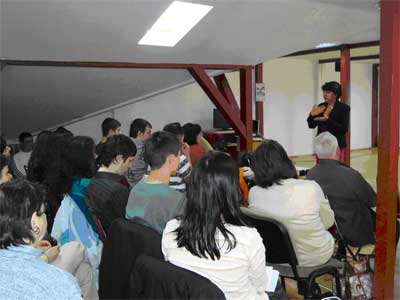
The first session addressed issues regarding the international context of energy production, the renaissance of nuclear power, the role of the IAEA in supporting nuclear energy programmes in the member states and a comparison of energy sources.
The second session, held in March 2010, focused on the history of nuclear power in the world, and in Romania, and on a presentation of the CANDU type reactor technology, given by nuclear engineers.
In the second part of each session participants were given the floor in order to ask questions and present their points of view. The pupils present at the seminars were very interested by the information they received and got involved in the debates, which demonstrates the need for a continuous and correct dissemination of information.
In the third session, the presentations addressed environmental issues and the contribution of nuclear power to the reduction of carbon emissions. One of the papers was presented by Sulfina Barbu, a Romanian MP.
The fourth session was dedicated to the Cernavoda NPP – as a corrolary of the previous ones. It highlighted the positive impact that the power plant has had on the environment and on the life of the local community, the safe management of radioactive waste and prospects for the future.
The enthusiasm of the participants and especially their desire to know more have encouraged us to believe that there is a real interest in nuclear power among young people and that society understands the need for clean, sustainable energy in the future.
AREN (the Romanian Nuclear Energy Association)
http://www.euronuclear.org/e-news/e-news-29/WONUC.htm


Since the first edition of this marathon took place in 1996, between the cities of Paris and Brussels, this annual event, organized by WONUC employees, has been held in Hungary, Slovakia, the Czech Republic, Romania, Germany, Russia (on two occasions), Sweden, Bulgaria, Lithuania and, in the last three years, outside Europe: Cuba, Japan and Brazil (ending in the three capital cities). One of its stages also passed through Vienna, with the delivery of a petition to the headquarters of the IAEA.
One of the primary objectives of this event is to defend the use of nuclear power for peaceful purposes. This and other messages are included in the petitions that are read out at the rallies and delivered to or distributed to the main authorities in each country en route.
The early editions were designed to make the petition known via a continuous, non-competitive race (on average between 200 and 300), with participants divided into several groups. The average distance covered was around 350 Km and, since all participants took part in the first and last stages, it involved a route of approximately 50 Km for each one of them. In later editions, it only took place during the day in order to have the best security conditions and to create the greatest possible media impact.
The 15th edition will take in Spain, in September. It will begin with a rally at the Garoña nuclear power plant at 9 o’clock on 17 September. At 10 o’clock in the morning, the most physically fit workers will start what has been called the Octomarathon: two hours of running in the morning and another two in the afternoon. This will bring them close to Madrid. Closer to the Spanish capital other groups of workers will set off on routes on the 22 and the 23 September, completing a distance of three and two marathons, respectively.
On 24 September, the Nuclear Marathon will begin for the rest of the participants, including all those from the twenty countries who are expected to join in. They will all take part in a rally at the Garoña plant at 11 o’clock in the morning, to support the power plant’s continuous operation, and at 12 noon they will run one stage of the marathon. During the afternoon they will run another stage through the city of Burgos, capital of the province where the Garoña plant is located. They will finish by reading a petition in support of the plant and by delivering it to the authorities.
On the last day, 25 September, all the participants, including the ones who went ahead to cover a distance of several marathons, will meet on the outskirts of Madrid, from where the last non-competitive stage will take off en masse. Along its route, they will stop for a rally in front of the Ministry of Industry and end up near the national Congress, where the last and most important rally will be held and where a petition of support will be read and passed on to various Spanish authorities.
Other associated activities will include:
Three seminars related to the use and applications of nuclear power for peaceful purposes
A competitive stage during the afternoon of the 25 September, in Madrid, which is considered to be like a World Championship race for the nuclear sector.
The 7th edition of the nuclear sector’s Indoor Football World Championship.
An event in honor of the marathon athletes.
We would like to encourage all of you to take part in this event, either as runners in the different stages of the marathon or as supporters at the different rallies. You can register via the website at: www.wonucspain.org
Álvaro Díez (General Coordinator)
http://www.euronuclear.org/e-news/e-news-29/HNS-news.htm

The Hungarian Nuclear Society (HNS) organised its mid-year General Assembly on 19 May 2010, in Budapest. During the meeting the activity and financial report of 2009, as well as the plans for 2010, were approved.
In addition to such officials items, a presentation was given as part of the last point on the agenda, namely plans for the ALLEGRO prototype. The presentation was made by Gerard Cognet, CEA Regional Delegate for Central Europe, France, and by János Gadó, Director of KFKI Atomic Energy Research Institute (AEKI), Hungary.
The ALLEGRO is an experimental prototype 75 MWth gas cooled fast reactor (GFR) that was selected as one of the six candidate technologies to feature in the Generation IV Roadmap. The ALLEGRO was proposed by the CEA as a demonstration facility to be built in the next decade (see enclosed overview).
Three respective nuclear research institutes in Eastern European – UJV, Nuclear Research Institute, Czech Republic; KFKI AEKI, Hungary and VUJE, a.s., Slovakia – agreed to start a joint regional project to prepare for a later decision on the construction and operation of the ALLEGRO GFR in one of the three countries. The Preparatory Phase Memorandum of Understanding (PPMU) for this project was signed on 20 May 2010, one day after the HNS General Assembly.
ALLEGRO Primary System Overview
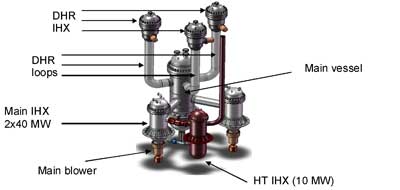
ALLEGRO Flow Diagram (one loop)
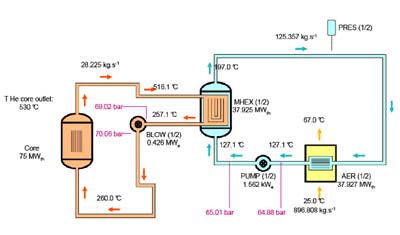
http://www.euronuclear.org/e-news/e-news-29/bns.htm

Since 2004, the Belgian Nuclear Society has organised, with the dynamic support of the Young Generation Network (YGN), a contest for the best Master’s thesis of each academic year. Its objective is to encourage young people to enter the fascinating world of nuclear science. Naturally, the thesis must be on a nuclear subject – in the broadest sense of the word. This year, the scope of the submitted theses was broad – with topics ranging from industry and engineering-related subjects to scientific research.
For each submitted thesis a “reading committee” made up of several BNS-YGN volunteers evaluated each submitted thesis in accordance with a number of previously agreed criteria. These included the following: Is the thesis clearly linked to and relevant to a nuclear subject? Is it innovative? Does it have clearly defined objectives, and does it achieve them? Has the subject been approached with creativity and innovation? Last, but not least, the evaluation of each thesis also involved the judgement of an expert in each chosen field.
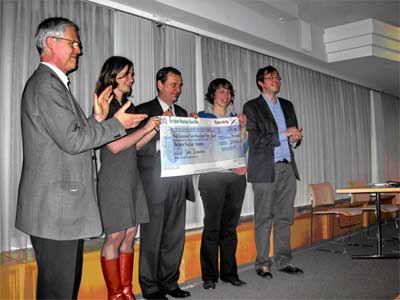
Three short-listed theses were selected for the Masters Thesis Final. The final selection and prize-giving took place on February 25, 2010, during a BNS Evening Lecture. The three finalists, Robin Cuypers, Jytte Elseviers and Guillaume Pochet, presented their Master’s thesis. The jury was impressed with the quality of each presentation, but only one candidate could win the prize. After careful consideration, Jytte Elseviers was declared the winner, for her work entitled "Electron Capture Delayed Fission of Tl-180". Guillaume Pochet won the “public's prize” for his work "CFD Study of the Flow Mixing in the Downcomer and Lower Plenum of PWRs". The prize-giving was followed by a cocktail in the Tractebel Engineering Forum, and a dinner in which the three finalists, the jury and the reading committee took part.
The deadline to receive candidate theses for the 2011 prize is 30 October 2010.
More information is available at: www.bnsorg.be > Activities > Thesis Contest
http://www.euronuclear.org/e-news/e-news-29/aren.htm

The Romanian Nuclear Energy Association (AREN), the Romanian Atomic Forum (ROMATOM) and SN Nuclearelectrica SA recently organised two events that put Romanian children firmly in the creative spotlight: the fifteenth annual Alexandru Ene Drawing Competition, which has established itself over the years as a regular fixture on the Romanian nuclear industry’s events calendar, and the second annual The Atom – my friend Essay-writing Competition.
The competitions were promoted during April and May, in schools in Bucharest, Cernavoda, Pitesti and areas including counties such as Hunedoara, Arges, Bacau, Ialomita. By the competition deadline more than 100 drawings and 38 essays had been received.
The participants included kindergarten children, school and high school pupils up to 18 years old, all of whom had expressed their imagination and creativity under the supervision of their art, physics and biology teachers. The themes which entrants had to draw or write about were: What do we know about energy? The atom – our friend, nuclear power saves the environment and energy of the third millennium.
The organisers hosted an exhibition of the entries and an award ceremony at the Hebrew State Theatre, on the June 10, during which the winning entries received a prize. The mission of the jury was a difficult one. They had to evaluate both the artistic impression as well as the message conveyed by each drawing and essay. The award ceremony began with an artistic show dedicated to the younger generation, parents and teachers. It was performed by students of the International School of Informatics together with the popular singer Alexandra Ungureanu.
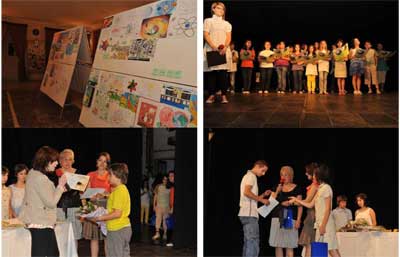
The President of AREN, Mihaela Stiopol, together with the Deputy Secretary of ROMATOM, Valentina Dinu and Livia Chitu from the Young Generation Network, awarded prizes to the most talented children. The prizes were divided into 4 age categories. The special prize for originality and composition was awarded to Pristavu Adrian Emanuel (a 12 years old student from the Albestii de Arges School) for the drawing entitled The World in Colours. All who took part in the competition received a diploma to mark their participation and everyone enjoyed the show.
The drawings will be on display at different locations in Bucharest and around the country (Pitesti, Cernavoda, etc).
The atom is everywhere around us: in a sunset or a sunrise, in the blooming tree in front of our house that makes me get drunk with its stunning fragrance, in the morning dew caressing fragile plants having just awakened from sleep, in water droplets caressing even our hair when it rains. It represents life, freshness and future of the world. A world whose air should be clean and its sky should be crystal clear, free of black smoke clouds and ash relesed by burning coal”. An excerpt from the essay of Bocirnea Andrei’s (a 13 year-old schoolchild from the Mircea Eliade School, Cernavoda) in the 12 – 14 years-old age category. |
http://www.euronuclear.org/e-news/e-news-28/finnish-society.htm

The installation of the reactor pressure vessel (RPV) for the third power unit at Olkiluoto nuclear power plant took place on 21 June 2010. Measuring 5.3 meters in diameter and 10.6 meters in height, the 420 tonnes component was installed using two cranes: the permanent polar crane and a large movable unit.
Total manpower working at the Olkiluoto 3 site at present numbers 3900 and the percentage of that total made up by installation workers is increasing. The main components of the turbine island have already been installed and the installation of the primary circuit components has started. After the RPV the reactor coolant piping and the housings of the main reactor coolant pumps will follow next. The first of the four steam generators will be lifted into the reactor building towards the end of the summer.
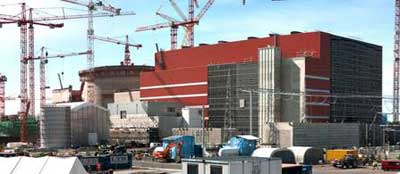
The most visible construction operation in progress at the moment is the concreting of the inner dome part of the reactor building. A thin layer of concrete has already been poured on top of the steel liner, and a second thicker layer of concrete is yet to be poured. This operation is expected to be completed during the summer.
Pictures of the RPV emplacement are available from TVO's image gallery (www.tvo.fi/www/page/2733/).
ONKALO, the underground rock characterisation facility excavated in the Olkiluoto bedrock, will reach its final disposal depth in June.
Started in 2004, the tunnel excavation and research carried out during the work have enhanced the knowledge provided by above ground drilling and measurements of the suitability of the Olkiluoto bedrock for the final disposal of spent nuclear fuel. In addition to underground research, bedrock investigations will also be continued above ground. Currently, the 54th deep research hole is being drilled in Olkiluoto.
The excavation of ONKALO has continued to a depth where the properties of the bedrock represent those of the final repository. The properties will be studied in greater detail in the ONKALO research niches. A total of five research niches are used for studying bedrock stress, hydrochemistry, and water conductivity. Posiva has launched an experiment at a depth of 350 metres, studying the impact of bedrock stress. Posiva will drill three holes of 1.5 metres in diameter and 7 meters deep.
Two test and demonstration tunnels will be excavated at the final disposal depth so that their design and implementation correspond with those of the final disposal tunnels. The primary objective is to indicate the readiness to identify a suitable bedrock volume for the final disposal tunnels and canister holes, and to excavate the tunnels according to requirements. In addition to the test and demonstration tunnels, Posiva will excavate equipment and maintenance facilities deep into the bedrock. The planned excavation will be completed by the end of 2011.
Currently, the above ground construction of ONKALO is focused on the foundations of the ventilation and hoist building. The objective is that the ONKALO facility will be ventilated through the ventilation building in 2011.
Posiva organised a topping-out ceremony in ONKALO, on 17 June 2010 to mark the reaching of the final disposal depth of 420 metres.
Pictures of ONKALO and the topping-out ceremony are available on the Posiva website (www.posiva.fi/en/databank/image_gallery ).
The monthly meeting of the Finnish Nuclear Society (ATS) took place at VTT. The main topic of the meeting was the new EU technology platforms. Rauno Rintamaa from VTT spoke about the SNE-TP (Sustainable Nuclear Energy Technology Plattform). Marjatta Palmu, from Posiva, talked about the IGD-TP (Implementing Geological Disposal Technology Platform). A total of 36 members participated.
The “new old-generation section” of ATS - ATS Seniors - has had several planning meetings and has formed a coordination group to direct its activities. The coordination group prepared the group’s Terms of Reference (ToR). ATS Seniors has already organised its first seminar for its members. In the seminar, Ami Rastas, the former Vice President of TVO, spoke about the status of nuclear technology in the world today, and Jarmo Ala-Heikkilä, from the Aalto University, presented future prospects for nuclear technology. A discussion of activities of the ATS Senior group followed the presentations. All together 42 seniors participated. The presentations are available from the ATS internet site (www.ats-fns.fi/info/arkisto.html).
The number of supporting members of ATS increased to 20 this summer, when B+Tech Oy joined up. B+Tech Oy was founded in 2007 and the company started operating at the beginning of 2008. Today, B+Tech has 12 employees. The company is owned by the Finnish engineering company Saanio & Riekkola Oy and the Swedish Clay Technology Ab. B+Tech Oy is a growing enterprise, which is at the moment specialises on the investigation of Engineered Barrier Systems (EBS) -systems and especially of bentonite clay, a material needed in the final disposal of spent fuel.
In summer 2008, B+Tech opened a new research laboratory, which is probably the only research laboratory tailored for bentonite investigations. The specialists at B+Tech carry out research into the chemical composition and swelling properties of bentonite clay, and on the behaviour of bentonite in the final disposal conditions - especially during the interactions of bentonite with ground water, iron and cement. Their expertise covers theoretical analysis, experimentation, engineering and production.
More information about B+Tech is available from the company web site (www.btech.fi/ ).
The annual summer event of the ATS Young Generation section was hosted by Loviisa NPP on 16th of June. The event included presentations of various current nuclear topics and an "Amazing Race" competition where participants got acquainted with the city of Loviisa. A total of 90 people participated.
http://www.euronuclear.org/e-news/e-news-29/ygn-reporter.htm

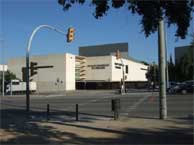 The European Nuclear Conference (ENC) 2010 was held in the Mediterranean city of Barcelona, Spain, from 30th May to 2nd June. Organised by the European Nuclear Society (ENS) in cooperation with the Spanish Nuclear Society (SNE), the International Atomic Energy Agency (IAEA) and the Nuclear Energy Agency (NEA), the event attracted more than a thousand professionals from thirty countries to the Palau de Congressos de Catalunya. ENC2010 had a multidisciplinary approach, looking at nuclear applications in energy production and medical technologies.
The European Nuclear Conference (ENC) 2010 was held in the Mediterranean city of Barcelona, Spain, from 30th May to 2nd June. Organised by the European Nuclear Society (ENS) in cooperation with the Spanish Nuclear Society (SNE), the International Atomic Energy Agency (IAEA) and the Nuclear Energy Agency (NEA), the event attracted more than a thousand professionals from thirty countries to the Palau de Congressos de Catalunya. ENC2010 had a multidisciplinary approach, looking at nuclear applications in energy production and medical technologies.
The first get-together of the conference took place in the Garden Pavilion of the Palau during the Welcome Reception. José Emetrio Gutiérrez, conference Chairman, welcomed all the attendees and gave a brief talk about the main goals of the event. Experts from universities, research centres, industry and other nuclear organisations exchanged views and discussed different topics related to the nuclear field. In addition to the more than 750 registered participants, the credibility of the ENC 2010 was further acknowledged by the participation of 250 experts and top managers from industry organisations such as General Electric, Westinghouse, Hitachi, AREVA, EDF, ROSATOM, TVO, IBERDROLA, SCANA, ENEL, SKODA JS etc.
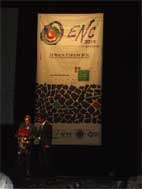 The Monday morning Opening Session took place in the auditorium. The conference Chairman began by recognising the role that nuclear energy plays as a key part of the solution to meeting increasing energy demand. Also, Mr. Andrea Brentan, the Chief Executive Officer of ENDESA, made the point that an energy mix involving nuclear energy offers a possible solution to this urgent modern problem.
The Monday morning Opening Session took place in the auditorium. The conference Chairman began by recognising the role that nuclear energy plays as a key part of the solution to meeting increasing energy demand. Also, Mr. Andrea Brentan, the Chief Executive Officer of ENDESA, made the point that an energy mix involving nuclear energy offers a possible solution to this urgent modern problem.
The President of the American Nuclear Society (ANS), Thomas L. Sanders and the President of the ENS Young Generation, Edourad Hourcade, highlighted the importance of young people involved in the nuclear industry. Both of them pointed out the growing interest of young people in the nuclear field and the importance of promoting knowledge among these “young successors,” who posses such great potential for the future of the nuclear development. Antoni Castells, Councillor for the Economy in the Catalan Government, contributed to the opening session by outlining the change that has occurred in energy strategies so far, namely: reduction of greenhouse gases emissions and the establishment of a safe and efficient energy model. Finally, Luis Echávarri, Director-General of the OECD/NEA, expressed his belief in the current nuclear renaissance, emphasising nuclear goals such as security of supply, economic costs and environmental protection and also the construction of new reactors. He also agreed with Mr. Sanders and Mr. Hourcade that one of the most important roles that
nuclear industry must play is to motivate young and well-qualified people to work in nuclear research, as well as to promote job opportunities for them in the nuclear sector. After his speech, representatives of some of the leading companies presented a plenary session about current technologies being developed. At the end of the plenary session, Livio Vido, from ENEL, explained the current energy situation in Italy, stressing that: “Plans are in place for the construction of eight reactors in Italy in the coming years.” |
 |
During the conference many interesting projects were presented thanks to the large number of sessions, which focused on the following research areas: new reactor and energy technologies, the nuclear fuel cycle, medical applications, education and training and socio-economic, political and ethical considerations. Also more than four hundred posters were exhibited in the Palau’s exhibition halls.
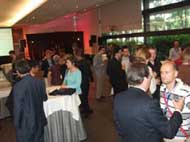 On Monday night, the ENS Young Generation Network (YGN) organised an informal dinner for all the young specialists present at the conference. It was an opportunity for them to get to know people from all over the world who are working in the nuclear field. During the dinner, the Jan Runermark Award (which is awarded annually at ENC2010
On Monday night, the ENS Young Generation Network (YGN) organised an informal dinner for all the young specialists present at the conference. It was an opportunity for them to get to know people from all over the world who are working in the nuclear field. During the dinner, the Jan Runermark Award (which is awarded annually at ENC2010
in memory of the former President of ENS and founder of the international Young Generation Network, Jan Runemark, who died in an accident in 1995) was awarded. It is given annually to the person who is judged to have given the most outstanding service to the YGN. The winner announced for 2010 was Andre Versteegh, the former Director of the Nuclear Research and Consultancy Group (NRG) and the current President of NucNet
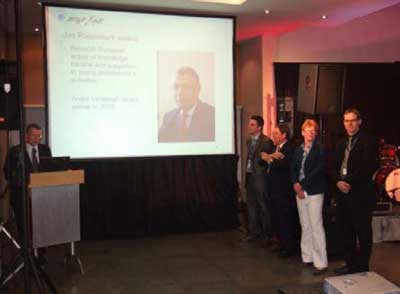
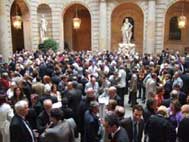 Another social event, the ENC 2010 Conference Dinner, took place on Tuesday at the splendid Casa Llotja de Mar, one of the most significant monuments in Barcelona. Built in the second half of the 14th century, it is the former headquarters of Catalan commerce near the city’s seaside.
Another social event, the ENC 2010 Conference Dinner, took place on Tuesday at the splendid Casa Llotja de Mar, one of the most significant monuments in Barcelona. Built in the second half of the 14th century, it is the former headquarters of Catalan commerce near the city’s seaside.
On the last day, the organisers made some very interesting speeches. The first session included speeches on nuclear energy development, nuclear non-proliferation and the harmonisation of EU nuclear regulations. Other fascinating presentations included one on nuclear technologies of the future, especially the right-sized reactors, presented by Mr. Sanders. The subject of the last speech was the ITER project. |
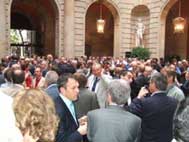 |
According to Mr. C. Alejaldre, Deputy Director-General of the Safety and Security Department of ITER, more than the half of the world´s countries are involved in this project – the most important scientific and technological enterprise ever undertaken in the nuclear field.
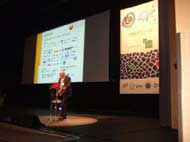 The second plenary session started with a presentation on the Sustainable Nuclear Energy Technology Platform (SNETP) by the technology platform’s Vice-Chairman, Frantisek Pazdera. He outlined the EU research and development work with regards to GEN IV reactors that is being carried out within the context of sustainable nuclear energy.
The second plenary session started with a presentation on the Sustainable Nuclear Energy Technology Platform (SNETP) by the technology platform’s Vice-Chairman, Frantisek Pazdera. He outlined the EU research and development work with regards to GEN IV reactors that is being carried out within the context of sustainable nuclear energy.
At the end, ENS President, Professor Vladimir Slugen, together with ENC 2010 Chairman, the ENC 2010 Programme Committee Chairman and ENS High Scientific Council Chairman, thanked all the attendees and congratulated everyone on the success of the meeting.
At the very end of the conference, Bernard Bonin, Chairman of the ENS High Scientific Council, presented some of the highlights of ENC2010 in his concluding remarks.
Finally, the overriding and strong conclusion that emerged from the conference was the fact that overall the nuclear domain is in a very healthy and lively state!
The Young Generation Network played an important role during this conference. Many speeches were given by its members. One of the most interesting parts of the conference for the young generation was the ENEN PhD event on Wednesday morning, where 8 PhD theses by graduate students from various European countries were presented. Also several posters were presented by YGN members.
At the end of this report we would like to thank ENS staff for its organisation of this great conference and for the very friendly and motivating atmosphere. Personally, as the Czech Young Generation reporter, I am also grateful for the financial support that was given to me by the West Bohemia University and by SKODA JS jsc. For my part, I would also like to thank the Spanish Young Generation (JJNN) for entrusting me with the task of being the ENC2010 conference reporter. Congratulations them for the excellent work they are doing!
Jan Blazek |
Manel M.Cid |
http://www.euronuclear.org/e-news/e-news-29/YGN-core-com-meeting.htm

The latest European Nuclear Society Young Generation Network (ENS-YGN) Core Committee Meeting (CCM) took place in Barcelona on 29 May. The location and date were chosen to coincide with the European Nuclear Conference (ENC2010) that was held simultaneously in Barcelona from 29 may to 2 June.
The CCM formally began on the 28 May with a technical tour. Participants visited Vandellós II NPP, located in the province of Tarragona, about 150 km south of Barcelona, on the mediterranean coast. Vandellos II NPP, a 1080 MW PWR, is one of the three NNPs belonging to the “Asociación Nuclear Asco-Vandellos” ANAV, (Ascó-Vandellós Nuclear Association). Endesa and Iberdrola are the shareholders of ANAV. The plant started operating in 1988. The YGN members were welcomed by the External Relations Coordinator, who guided the group around the different areas of the plant. After passing several security check-points, the attendees visited the spent fuel building, where they could observe the racks with the fuel assemblies and the turbine building.
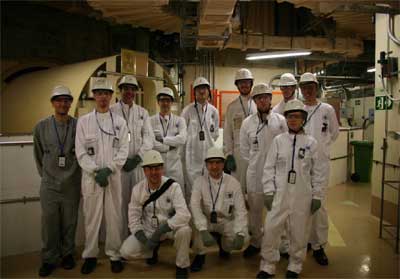
Picture 1: YGN members inside Vandellós II NPP
After a very complete visit of Vandellos II NPP, YGN members went to the Tecnatom training facility, located 10 minutes from the plant, and where both Ascó NPP (also sited in the same province) and Vandellós NPP control room simulators are located. Tecnatom is a leading Spanish engineering company that currently designs and operates simulators to train nuclear plant operators. In Tecnatom’s facilities YGN members had the opportunity to obtain first-hand insight into nuclear operations. Tecnatom’s instructors prepared two different simulation scenarios: the first one, a turbine run-back due to the loss of one of the main feed water pumps, and the second a scram due to a turbine trip. The group could follow how the procedures and protocols were thoroughly implemented.
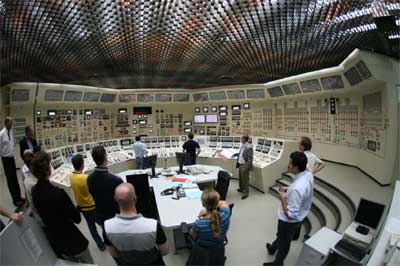
Picture 2: Tecnatom control room simulator
The CCM took place on 29 May in the premises of the UPC-BARCELONATECH (the Polytechnic University of Catalonia), in Barcelona. The meeting was attended by 24 members from 15 national delegations. The day started with the establishment of a working group, which focused its discussions on communications issues. Different national communications strategies were explained and discussed. As a main conclusion, the working group proposed to develop a project which aims to collect material from all countries and to create a YGN leaflet on the topic. Indeed, as agreed within the group, communications in the nuclear industry is essential for providing information in a transparent way to the general public and thus increasing their knowledge of nuclear energy issues and helping overcome misunderstandings and groundless fears. It was agreed that the different delegations would share their communications activities so that a useful benchmark could be carried out in order to adopt the best strategies.
The CCM also featured short briefings about recent activities carried out by the YGN and upcoming events. As part of the meeting agenda the following topics were discussed:
Participation in ENC2010: during ENC2010, ENS-YGN organised three events: an evening event devoted to the Jan Runermark Award and two workshops focusing on:
1). Education and training, entitled Are we still falling into nuclear by chance and 2). CO2 emissions avoidance, entitled Nuclear energy and climate change.
Next year’s ENS Young Generation Forum, which will be held in Prague: the Czech delegation showed a video and informed YGN members about the progress that has been made in recent months.
COP 16: the opportunity to participate in the next UNFCCC that will take place in Mexico next December and for which some volonteers will be needed to update previous work and elaborate new material to present communications issues
The meeting finished with a dinner in Barcelona city centre.
The next ENS-YGN CCM will take place in Vienna in mid-September.
Special thanks go to:
Jose María Grávalos (ANAV General Director)
Montse Godall (PR Manager)
Antonio Moruno (Tecnatom Training facility Manager)
Javier Dies (Prof. Ph.D. UPC-BARCELONATECH (Polytechnic University of Catalonia))
Spanish Nuclear Society Board
http://www.euronuclear.org/e-news/e-news-29/North-American-YG.htm

In May 2010, over 300 members from different chapters of the NA-YGN attended the North American Young Generation in Nuclear Workshop. This year the workshop underlined the emissions-free credentials of nuclear generation under the theme: Leading the Change: Go Green. This is, indeed, an important aspect of nuclear technology, as the industry needs to change the way it is presented to society and should be presented as an important part of the ‘clean energy’ equation and as a solution to climate change.
The conference started with a welcome speech by the President of the NA-YGN, Mike Kurzeja. This was followed by the session entitled: Changing Leadership in the Nuclear Industry, in which Mark Fecteau, Managing Director, GG&I Strategic Project Development of Westinghouse Electric Company, and Dennis Goin, Executive Engagement Leader of Kotter International, explained how the current nuclear industry needs new leaders to drive forward change due to growth in the demand for clean energy. They also highlighted how this is already creating a challenge for future performance levels. Mark Fecteau shared his operating experience at Westinghouse with participants. He pointed out that “change is not easy” because it is often resisted and it is always difficult to measure the benefits you will obtain from it. The most important thing is to create a sense of urgency and follow specific steps to create the change, putting together a group with enough power to drive through change. Furthermore, it is important to have a communications strategy in order to continue to create success broadly. In this way you create a ‘want to’ environment not a ‘have to’ environment.
In the second session in the afternoon, Nuclear Power as a Component of a Green Energy Portfolio, the current positive situation for the nuclear industry in the US was discussed. With the support of President Obama, the US will build its first nuclear power plant for more than 20 years. This new scenario is very important in order to have transparency as a key factor behind building support for nuclear energy. It is necessary to take every opportunity to educate different stakeholders and gain their trust through transparent communications and operational excellence. In this sense, the young generation should play an important role.
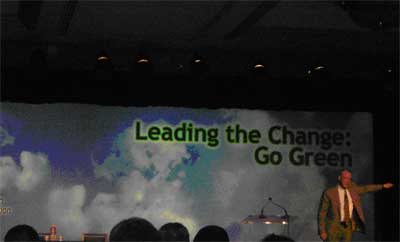
During the second day of the workshop there were some parallel sessions focused on the change needed in the current nuclear industry in order to present nuclear energy as an important part of the solution to climate change. Other issues discussed were: problems with waste management, improvements that are being implemented to avoid problems in underground water contamination, and the possibility of fuel reprocessing as a solution to waste management, which is not currently allowed in the US.
The main session on the second day focused on the role played by the nuclear young generation today, the NA-YGN in this case, and their relationship with different nuclear companies. Senior Vice Presidents representing different companies, such as Progress Energy, Energy Nuclear Operation and Areva, highlighted that they are supporting the NA-YGN because it can attract new talent, help maintain existing excellence and create networking opportunities. This is really necessary in the current nuclear industry environment, especially with new nuclear power plants planned for construction by 2030. The speakers encouraged young people today to promote debates on nuclear energy with the general public, politicians and environmental organisations.
In the third and final day of the workshop parallel sessions focused on how the young generation should orient its professional career. Vice Presidents of different nuclear companies, more specifically, Westinghouse, Becthel and GE Hitachi - discussed their professional experiences. They also stressed the importance of the international mobility that young professionals should have in the industry, at a time when new plants are soon going to be built all around the world.
In conclusion, it is important to stress the main role that the current young generation should play in leading the changes necessary for the industry. We have to be prepared for the future and approach nuclear energy as an important solution to climate change.
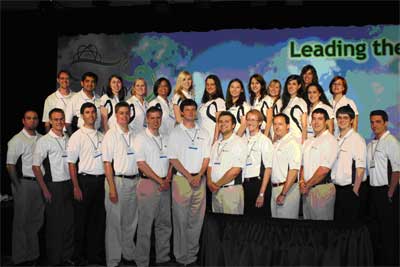
Silvia Ortega Les,
Member of the Spanish Nuclear Young Generation (JJNN) Board
http://www.euronuclear.org/e-news/e-news-29/taiwan.htm

In this summer’s edition of ENS NEWS we are casting our net farther afield with an article from the Atomic Energy Council in Taiwan. It gives an overview of nuclear developments in Taiwan and highlights how the nuclear revival really is global.
Soon after President Ma Ying-jeou took office on 20 May 2008, the new government passed a Sustainable Energy Policy Directive, calling for equal emphasis on “energy security”, “economic development”, and “environmental protection” in future energy development to ensure national security and a sustainable future. Following the goal of this Directive, the Executive Yuan launched the Third National Energy Conference, which was realized in April 2009, to provide guidelines on the nation’s energy strategies. The conclusion of the conference outlined three major goals on future energy developments: to work toward a “low-carbon society”, to develop future economy, society, and environment based on new energy technology, and to coordinate government policies to reach the “low-carbon society”.
Several actions have since been initiated, including in January 2010 the establishment of a new committee led by Vice Premier to promote energy conservation and carbon reduction. In March 2010 the committee finalized a master plan for reaching targets of energy conservation and carbon reduction. In the plan, targets were set for reducing overall carbon emissions to 30% lower than BAU (business as usual) level by 2020. Nuclear power has now been recognized as an important low-carbon source of power, which also increases energy supply diversity.
In 2009, 99.4% of Taiwan’s energy sources relied on imports. Electricity generation totalled 229.7 terawatt-hours (TWh) which was contributed by: coal 38.40%, co-gen 17.3%, LNG 20.1%, oil 2.7%, nuclear 18.1%, hydro 3.1% and wind & solar PV 0.35%.
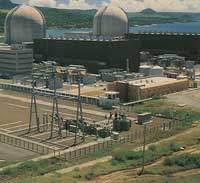 |
Power consumption dropped 3.6% across Taiwan during 2009 as a result of the global recession, with industrial electricity use down 6.3%. Nonetheless, nuclear power contributed 18.1% to the total supply – compared to 17.1% in 2008. The three nuclear power plants at Chinshan, Kuosheng and Maanshan, operated by state-owned utility Taiwan Power Company (TPC), with two operating units at each site, generated 41.57 |
|---|
terawatt-hours (TWh) of electricity (gross) in 2009 – setting a new record high for the third consecutive year.
Performance wise, the average capacity factor for all six units in 2009 was 92.17%, which ranked 6th in the world and also the best record ever in Taiwan’s nuclear power operation. The annual average number of abnormal events was 1.33 per unit (or 8 events for all six units), and the average number of automatic scrams was 0.17 per unit (or only 1 scram for all six units) in 2009. New records were also set at Maanshan-2 for a refueling outage of 28.48 days, a full day shorter than the record set at Kuosheng-2 in 2008, and for continuous operation of 542 days, breaking the old mark of 538 days set at Chinshan-1 in 2005.
During the two-year time from July 2007 to July 2009, power uprates of the MUR (Measurement Uncertainty Recapture) type were accomplished on all six units, adding 56 MWe to the existing installed capacity of 5,144 MWe, which amounts to an annual increase of 0.44 TWh in electricity generation, equivalent to 0.28 million metric tons of CO2 emissions reduction.
Construction continues at the fourth nuclear power plant “Lungmen” housing two ABWR units with 95% completion for construction and 37% completion for test runs as of 28 February 2010. The project has encountered significant delays first due to the suspension in 2000, then the rising price of construction materials, finding new subcontractors to replace the bankrupted and negotiating new contracts to succeed the expired ones. Completion and testing of the integrated distributed control and information system (DCIS) has been one of the greatest challenges of the project. Commercial operation dates have been reset to December 2011 and 2012 for Lungmen-1 and -2, respectively.
On-site dry storage prior to final disposal has been recognized as a favorable option for the spent nuclear fuel management. An application for constructing a spent fuel dry storage facility at Chinshan plant was submitted by the TPC in March 2007. After rounds of review by a technical review team, the Fuel Cycle and Materials Administration (FCMA) of the Atomic Energy Council (AEC) accepted the application and issued a construction license in December 2008. The TPC is ready to commence the construction work pending approval of its water and soil reservation plan by the county government, which is expected to happen very soon.
As required by law, a candidate site for a low-level waste final disposal facility will be determined through a referendum on multiple recommended candidate sites. In March 2009, the Ministry of Economic Affairs (MOEA) announced two recommended candidate sites, as determined by its site selection committee, located in Nantien village of Taitung County and Donguiyu Islet of Pescadores. However, the county government of Pescadores subsequently claimed the site as a natural reserve, which by law must be excluded in the siting process. The siting committee is now working on recommending additional potential site(s) to re-establish a list of multiple recommended candidate sites.
FCMA has also started on establishing a personnel qualification system for radioactive waste management, qualifying not only regulatory staff but also facility operators. The corresponding regulation was promulgated in April 2009, with sunset clauses to cease current practices in two years.
The AEC started a rigorous safety review upon receipt of a 20-year license renewal application from TPC for the Chinshan plant in July 2009. Some of other major reactor regulatory activities include: 10-year integrated safety assessment for Chinshan-1, continuing review of transient analysis methodology licensing applications, and a first-time maintenance rule inspection for all nuclear plants. For the Lungmen plant, focuses were on the pre-operation test inspection of pre-requisite systems and the initial test program and turnover process inspection. In the area of radiation protection, significant efforts were devoted to the implementation of the mammography quality control program, a special safety inspection of radiation sources at all academia and research institutes, and strengthening of self management in NDT radiation safety.
Major research focuses of the Institute of Nuclear Energy Research (INER) include: time limited comprehensive safety assessment for Chinshan and Kuosheng NPPs, nuclear power uprate for all three NPPs, NPP license renewal related studies, development of decommissioning and decontamination technology, commercial-grade item dedication for nuclear safety-related applications, development of solid oxide fuel cells, cellulosic ethanol, high concentration photovoltaic (HCPV) systems, wind power generation systems, and the integrated model of energy technology and macro-economy, and development and commercialization of radiopharmaceuticals. In addition, about 140 person-years were devoted to technical service activities for NPPs including the construction of the Lungmen plant in 2009.
On 12 January 2010 the Legislative Yuan passed a set of four laws paving the way for a reform of the Executive Yuan that will reduce the number of cabinet-level agencies from 37 to 27. The AEC and its affiliated organizations are among those to be affected by this reform. According to the current plan, the AEC is to be transformed into a nuclear safety regulatory entity and maintain its nuclear regulatory role under the Ministry of Science and Technology (MOST). Its research arm INER will become an administrative corporation, and the MOEA will become the Ministry of Energy and Economic Affairs. Decisions on these and other major reshufflings will be finalized in the coming months. The reorganization will take effect on 1 January 2012, and a two-year transition ending in December 2013 will allow all agencies to adjust themselves to the new operations.
Jec-Kong Gone, Ph. D.
Chief, International Affairs Section
Atomic Energy Council
80, Sec. 1, Cheng-Gong Rd. Yung-Ho City, Taipei County
Taiwan 234, R.O.C.
Tel:+886-2-2232-2060
Fax: +886-2-8231-7864
E-Mail: jkgone@aec.gov.tw
http://www.euronuclear.org/e-news/e-news-29/nucnet-news.htm


8 Jun (NucNet): The operating licences for both units at the Almaraz nuclear power plant have been extended for 10 years.
A statement issued by plant management today said that the industry ministry, acting on a recommendation by the Spanish nuclear safety authority (CSN), had issued the official licence renewal permission with effect from 8 June 2010.
The plant must now undergo periodic safety reviews including probabilistic safety analysis (PSA), as demanded of all Spanish nuclear units.
Almaraz consists of two pressurised water reactor units. Almaraz-1 (1,010 megawatts) entered commercial operation in September 1983 and Almaraz-2 (956 MW) in July 1984.
8 Jun (NucNet): The Areva-Siemens consortium constructing the Olkiluoto-3 (OL3) nuclear unit in Finland has said most work on the unit will be finished by the end of 2012, with operator Teollisuuden Voima Oyj (TVO) saying the unit should start commercial operation some time during 2013.
Areva said yesterday that on 4 June 2010 the consortium submitted a proposal to TVO outlining a timetable and milestones for completion of the 1,600-megawatt European pressurised water reactor (EPR) up to reactor fuel loading by the end of 2012.
The main civil works for the unit are complete and most buildings are now fully closed and weatherproofed. After delays last year with the welding of pipes, piping installation has begun and the installation of the main components such as the reactor pressure vessel will begin “in the coming days”, Areva said.
TVO said: “Certain works, such as starting of the piping installation works in the reactor island, have been slower than planned, and the completion of the piping installations will be later than scheduled.”
In October 2008, TVO was told by Areva-Siemens that OL3 would be delayed to 2012 from its initial start-up target of 2009. TVO launched proceedings for compensation for the delays and Areva-Siemens filed a request for arbitration with the International Chamber of Commerce.
6 May (NucNet): The international community is confident of accumulating the knowledge necessary to build a nuclear fusion demonstration reactor within 10 years, the director-general of the International Thermonuclear Experimental Reactor (ITER) project has said.
Kaname Ikeda, addressing participants at the ‘Financial Times’ Energy Challenges conference in Brussels, Belgium, said: “ITER is not an electricity producing machine, it is experimental, but we are confident we can build this machine, and show that (fusion) is technologically feasible.”
He said “the design and structure of this machine must be safe and durable”, but he also acknowledged that in taking the “next step to demonstration” a number of challenges remained. “In parallel,” he added “there is the additional aspect of investigating the availability of materials.”
When questioned on the extent of international collaboration for the project, which is located in Cadarache in southern France, Mr Ikeda added that “defence-related technology” was also likely to be of interest to project participants: “I believe this is not only for peaceful purposes.”
ITER, which will be the world’s largest experimental facility to demonstrate the scientific and technical feasibility of fusion power, is a collaborative project comprising six member countries (China, India, Japan, Korea, Russia and the United States) and the European Union.
http://www.euronuclear.org/e-news/e-news-29/other-conferences.htm

12-18 July 2010
Cape Town, South Africa

29 August - 2 September 2010
at the Shilo Inn Convention Center in Idaho Falls, Idaho, USA
Teri Ehresman
Assistant General Chair
Tel: (208) 526-7785
Fax: (208) 526-2930
Email: teri.ehresman@inl.gov
more

26 to 29 September 2010
Orlando, Florida, USA
American Nuclear Society
email: fuel@fuel.ans.org
more

26 - 29 September 2010
Nesebar sea resort, Bulgaria
Bulgarian Nuclear Society
E-mail: manolova@inrne.bas.bg
more
26 to 30 September 2010
Avignon, France
Patricia Hamel-Bloch
SFEN
5 rue des Morillons
F-75015 PARIS
Tel: 33.1.53.58.32.12
Fax: 33.1.53.58.32.11
Email: phamel-bloch@sfen.fr
more
17-25 September 2010
CENTRAL NUCLEAR DE SANTA MARÍA DE GAROÑA NPP - BURGOS - MADRID (Spain)
WONUC (World Council of Nuclear Workers)
Alvaro Diez Gutiérrez
email: alvaro.atomsport@wonucspain.org
more
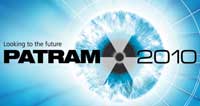
3 - 8 October 2010
London, United Kingdom
Department for Transport of the United Kingdom
more
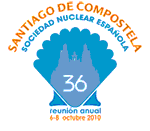
6 - 8 October 2010
Santiago de Compostela
Tel: +34 913734759
Fax: +34 912169177
more

17 - 20 October 2010
Hitotsubashi Memorial Hall, Tokyo, Japan
Japan Atomic Energy Agency
more

9th International Conference on Tritium Science and Technology
24 - 29 October 2010
Nara, Japan
National Instiute for Fusion Science Safety and Environmental Research
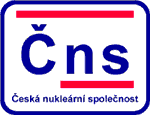
1 - 3 November 2010
Prague, Czech Republik
Czech Nuclear Society
more
2 - 3 November 2010
Rgeged Centre, Penrit, Cumbria, United Kingdom
more

4 - 9 September 2011
Nagoya, Japan
Atomic Energy Society of Japan
email: global2011@jaea.go.jp
more
http://www.euronuclear.org/e-news/e-news-29/Member-Societies.htm

Austrian
Nuclear Society |
Belgian
Nuclear Society |
Bulgarian
Nuclear Society |
Croatian
Nuclear Society |
Czech Nuclear Society |
Finnish
Nuclear Society |
French
Nuclear Energy Society (SFEN) |
German
Nuclear Society (KTG) |
Hungarian
Nuclear Society |
The
Israel Nuclear Society |
Italian
Nuclear Association |
Lithuanian
Nuclear Energy Association |
Netherlands Nuclear Society |
The Nuclear Institute |
Nuclear
Society of Russia |
Nuclear
Society of Serbia |
Nuclear
Society of Slovenia |
Polish
Nuclear Society |
Romanian
Nuclear Energy Association (AREN) |
Slovak
Nuclear Society |
Spanish
Nuclear Society |
Swedish
Nuclear Society |
Swiss
Nuclear Society |
http://www.euronuclear.org/e-news/e-news-29/Corporate-Members.htm

Links to ENS Corporate Members
|
http://www.euronuclear.org/e-news/e-news-29/editorial.htm
Mark O’Donovan, Editor-in-Chief
Contributors to this Issue:
Jan Blazek (
SKODA JS)
Bernard Bonin (HSC, ENS)
Manel M.Cid (
Technical University of Catalonia)
David Dalton (NucNet)
Álvaro Díez (WONUC)
Kirsten Epskamp (ENS)
Jec-Kong Gone (Taiwan Atomic Energy Council)
Silvia Ortega Les, (Spanish Nuclear Young Generation)
Vincent Massaut (SCK.CEN)
Tereza Melicherova (WIN)
Frigyes Reisch (KTH)
Vladimir Slugen (ENS)
Andrew Teller (Areva)
Jari Tuunanen (Finnish Nuclear Society)
Realisation:
Marion Brünglinghaus
Rue Belliard 65, BE-1040 Brussels
Phone +32 2 505 30 50 - Fax: +32 2 502 39 02
E-mail: info@euronuclear.org - http://www.euronuclear.org
The ENS News is a quarterly publication, in electronic
form only.
Copyright notice ©2010 European Nuclear Society.
Reproduction is authorised provided that the ENS News is acknowledged as the
source – except where otherwise stated.
![]()
© European Nuclear Society, 2010